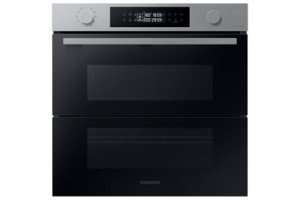10 Untrue Answers To Common Intergrated Oven And Hob Questions: Do You Know The Right Ones?
The Rise of Integrated Ovens and Hobs: An In-Depth Look
In today's hectic world, home cooking has actually undergone a significant change. One development that has profoundly impacted kitchen style and functionality is the integrated oven and hob, which combines both cooking appliances into a single, cohesive unit. Double oven & hobs electric built in explores the advantages, types, setup factors to consider, and necessary functions of integrated ovens and hobs, in addition to offering guidelines for consumers contemplating an upgrade.
What is an Integrated Oven and Hob?
An integrated oven and hob is a kitchen home appliance that combines an oven and a cooking surface (the hob) into one unit, typically developed to be built into the kitchen cabinets. This style offers a sleek, modern-day visual and maximizes kitchen space, while also offering functionality for cooking and baking. As the preferences for open-plan living continue to increase, integrated systems develop a streamlined appearance which blends seamlessly with kitchen furnishings.
Key Advantages of Integrated Ovens and Hobs
- Space-Saving Design: Integrated units are perfect for smaller sized cooking areas, enabling property owners to utilize readily available space effectively without compromising on performance.
- Aesthetic Appeal: With their structured look, these appliances produce a contemporary and cohesive kitchen design, getting rid of the requirement for standalone units.
- Reduce of Use: Integrated ovens and hobs usually come with user-friendly user interfaces and controls, making them accessible for cooks of all ability levels.
- Improved Safety: Many integrated systems include safety systems, such as child locks or automatic shut-off functions, which can improve security throughout cooking.
- Energy Efficiency: Integrated appliances frequently boast improved energy efficiency, reducing electricity expenses and ecological effect.
Types of Integrated Ovens and Hobs
Integrated ovens and hobs are readily available in different configurations to deal with various cooking needs and preferences. Below are some popular types:
Type
Description
Single Oven + Hob
A standalone oven with a built-in hob on top; suitable for compact kitchen areas.
Double Oven + Hob
Provides 2 ovens for increased cooking capacity, paired with an integrated hob.
Steam Oven + Hob
Integrates conventional cooking with steam functionality, boosting food flavors and nutrients.
Induction Hob + Oven
Functions an induction hob, offering rapid heating and energy efficiency.
Gas Hob + Oven
Integrates the responsiveness of gas cooking with an electric or standard oven.
Setup Considerations
When incorporating an integrated oven and hob into a kitchen remodel or brand-new build, numerous aspects require to be considered:
- Space Requirements: Ensure that there is adequate area for the combined system and that it fulfills regional structure policies.
- Ventilation: Adequate ventilation is vital, especially for gas units, to prevent buildup of poisonous gases.
- Power Source: Determine the suitable source of power (electric, gas, or dual-fuel) and ensure that the kitchen has the needed hookups in location.
- Style and Finish: Choose a design and finish that matches the total design of the kitchen. Stainless steel, black, and white are popular finishes.
- Expert Installation: It is a good idea to employ a qualified technician for setup, particularly for gas systems, to ensure safety and compliance with structure codes.
Necessary Features to Look For
Consumers should consider various features when picking an integrated oven and hob:
- Self-Cleaning Options: Many modern-day ovens come with self-cleaning functions, making maintenance simpler and more efficient.
- Smart Technology: Some integrated models use smart features such as remote control, cooking guides, and notifications.
- Multi-Cooking Functions: Look for ovens that enable various cooking approaches (bake, broil, steam, and so on).
- Security Features: Ensure that the unit includes security features such as an automobile shut-off, heat indications, and safe lock systems.
- User-Friendly Controls: Intuitive touch controls or knobs can improve the cooking experience.
Often Asked Questions (FAQs)
1. Are integrated ovens and hobs more energy-efficient than standalone units?
Yes, integrated ovens and hobs are typically developed to be more energy-efficient, making them a practical choice for the environmentally-conscious customer.
2. Can I install an integrated oven and hob myself?
While it is possible for skilled DIY lovers, it is generally suggested to have actually a certified technician carry out the setup, particularly for gas appliances, to make sure safety and compliance with guidelines.
3. Do integrated systems have the same cooking capacity as standalone appliances?
Yes, many integrated designs are developed to match or go beyond the cooking capabilities of standalone systems, providing adequate space for different cooking needs.
4. What is the lifespan of an integrated oven and hob?
With correct care and upkeep, integrated ovens and hobs can last anywhere from 10 to 15 years or more.
5. Exist any brand names that specialize in integrated ovens and hobs?
Yes, numerous trustworthy brand names, such as Bosch, Neff, Smeg, and AEG, offer a broad variety of integrated ovens and hobs that cater to various budgets and choices.
The integrated oven and hob represent a substantial improvement in kitchen technology, combining style, functionality, and efficiency into a single home appliance. As families continue to welcome contemporary cooking methods and aesthetics, these systems will likely get much more popularity. Customers need to consider their cooking routines, kitchen styles, and individual choices when selecting the perfect integrated system, ensuring they delight in the numerous benefits of these ingenious appliances for years to come.
By comprehending the numerous types, setup considerations, and important features of integrated ovens and hobs, homeowners can make educated choices as they purchase their cooking spaces.
